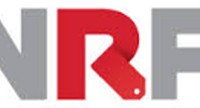NRF predicts retail sales will grow in 2017
- Details
- Published on Thursday, 09 February 2017 11:38
- Written by The Peorian
A top retail trade association projects retail industry sales will increase between 3.7 percent and 4.2 percent in 2017; online sales could go up as much as 8 percent and 12 percent.
The National Retail Federation made the projections in its economic forecast for 2017. Its forecast excludes automobiles, gasoline stations and restaurants.
“The economy is on firm ground as we head into 2017 and is expected to build on the momentum we saw late last year,” said NRF President and CEO Matthew Shay. “With jobs and income growing and debt relatively low, the fundamentals are in place and the consumer is in the driver’s seat. But this year is unlike any other; while consumers have strength they haven’t had in the past, they will remain hesitant to spend until they have more certainty about policy changes on taxes, trade and other issues being debated in Congress.
“Lawmakers should take note and stand firm against any policies, rules or regulations that would increase the cost of everyday goods for American consumers,” Shay said.
“Prospects for consumer spending are straightforward – more jobs and more income will result in more spending,” said NRF Chief Economist Jack Kleinhenz. “Regardless of sentiment, the pace of wage growth and job creation dictate spending. Our forecast represents a baseline for the year, but potential fiscal policy changes could impact consumers and the economy. It seems unlikely that businesses will notably increase investment until tax reform and trade policies are well-defined.”
“It is clear that online sales will continue to expand in 2017 and provide growth for the retail industry,” Kleinhenz said. “But it is important to realize that virtually every major retailer sells online and many of those sales will be made by discount stores, department stores and other traditional retailers. Retailers sell to consumers however they want to buy, whether it’s in-store, online or mobile.”
Additional Economic Insights:
- The economy is expected to gain an average of approximately 160,000 jobs a month. That is down slightly from 2016 but consistent with labor market growth.
- Unemployment is expected to drop to 4.6 percent by the end of the year.
- Economic growth is likely to be in the range of 1.9 percent to 2.4 percent.
- The forecast is a baseline, and does not take into account new fiscal measures pending in Washington.
Retail industry sales as defined by NRF include most traditional retail categories including non-store sales, discounters, department stores, grocery stores, specialty stores, and auto parts and accessories stores but exclude sales at automotive dealers, gasoline stations, and restaurants. Non-store/online sales include online sales, kiosks, catalogs, etc. and are a breakout of the overall number.
The Retail Federation also forecast that imports at the nation’s major retail container ports are expected to increase 4.6 percent during the first half of 2017 over the same period last year as the economy improves and retail sales continue to grow. That’s from the monthly Global Port Tracker report released by the NRF and Hackett Associates.
“This is very much in line with what we are forecasting for retail sales and consumer spending this year,” said Jonathan Gold, NRF vice president for Supply Chain and Customs Policy. “Retailers try to balance inventories very carefully with demand. So, when retailers import more merchandise, that’s a pretty good indicator of what they are expecting to happen with sales.”
Cargo volume does not correlate directly to sales because only the number of containers is counted, not the value of the cargo inside, but it nonetheless provides a barometer of retailers’ expectations.
“The United States is well placed in 2017 and is likely to outperform most of the rest of the developed economies,” said Ben Hackett, founder of Hackett Associates. “If the infrastructure investments promised by the new administration come about, we can expect stronger growth than in 2016, but that assumes good relationships with U.S. trading partners and no recourse to trade barriers that would result in a tit-for-tat response.”
Global Port Tracker, which is produced for NRF by the consulting firm Hackett Associates, covers the U.S. ports of Los Angeles/Long Beach, Oakland, Seattle and Tacoma on the West Coast; New York/New Jersey, Hampton Roads, Charleston, Savannah, Port Everglades and Miami on the East Coast, and Houston on the Gulf Coast. The report is free to NRF retail members, and subscription information is available at www.nrf.com/PortTracker or by calling (202) 783-7971. Subscription information for non-members can be found at www.globalporttracker.com.


















































